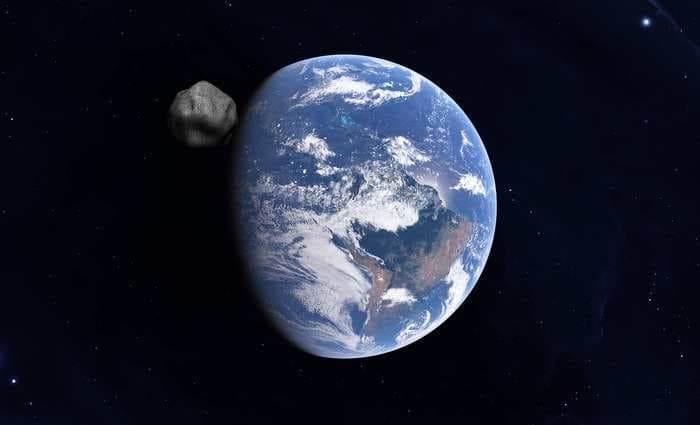- The biggest asteroid of 2021 is set to zoom past the planet at 9:00 pm on March 21 Indian Standard Time (IST).
- The half-a-kilometre wide space rock was first spotted in 2001, but this time it will be ten times closer to Earth at a distance of 2 million kilometres.
- The near-Earth object, dubbed 2001 FO32, will also be flying through faster than an average asteroid at 123,876 kilometres per hour.
Moreover, it will be closing in on the planet at a whopping speed of 123,876 kilometres per hour (kmph), which is faster than an average asteroid.
Details of asteroid 2001 FO32’s close approach:
According to the National Aeronautics and Space Administration (NASA), the asteroid doesn’t pose any threat to our planet. “There is no chance the asteroid will get any closer to Earth than 1.25 million miles [2 million kilometres]” said Paul Chodas, the director of The Centre for Near-Earth Objects Studies (CNEOS), in a statement.
Nonetheless, that’s close enough for 2011 FO32 to be put on NASA’s Asteroid Watchlist and be designated a ‘potentially hazardous asteroid’.
The 20-year old frenemy
The CNEOS has been tracking this asteroid for nearly two decades since it was first spotted on 23 March 2001 by the Lincoln Near-Earth Asteroid Research (LINEAR) program.
Initially, it was thought to be one kilometre wide, which is 200 metres wider than even the height of the world’s tallest building Burj Khalifa. However, more recent observations were able to determine that the asteroid is more like between 440 metres to 680 metres wide.
The encounter set to take place on March 21 will provide astronomers with the opportunity to get a more precise reading on the space rock not only in terms of its size but also to determine its composition.
It helps that the asteroid is going to be ten times closer than it was in 2001 at a distance of 23.9 kilometres from Earth.
What’s the real threat?
The bigger the asteroid, the bigger the threat. As long it doesn’t get close enough to be pulled in by Earth’s gravity, Earthlings can breathe a sigh of relief.
But past experiences have shown us that asteroids, some which are much smaller than 2001 FO32, have the potential to wreak havoc once they break through the atmosphere.
In 2013, the Chelyabinsk meteor — only 17 metres wide — streaked through the skies of Russia and exploded only 30 kilometres above the Earth’s surface.
Even though there wasn’t a direct impact, the resulting force equivalent to 444,000 tonnes of TNT exploding was enough to shatter glass, level trees and break down buildings within a radius of 500 square kilometres.
But, thankfully, that is not a concern with 2001 FO32. As the asteroid makes its way through the inner solar system — the area from Mars to Mercury — it will pick up speed like a skateboarder rolling down a halfpipe before slowing down and being flung back into deep space to continue its orbit around the Sun, according to NASA.
SEE ALSO:
What happens when an asteroid actually hits Earth
A comet has been spotted among Jupiter's ancient asteroids for the very first time
NASA and Europe’s first target to keep an asteroid from hitting Earth has officially been dubbed Dimorphos
